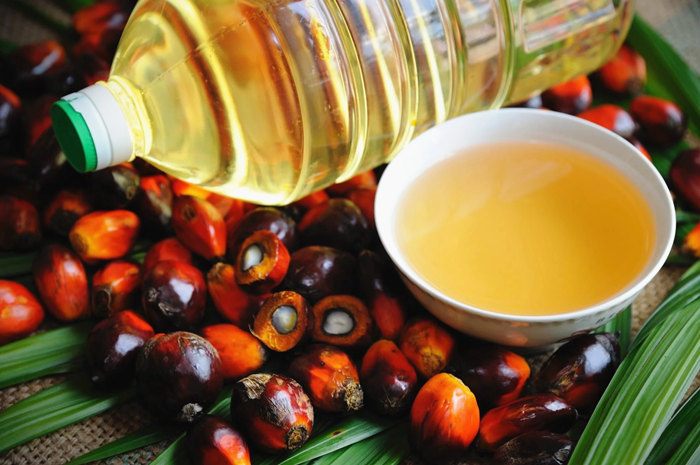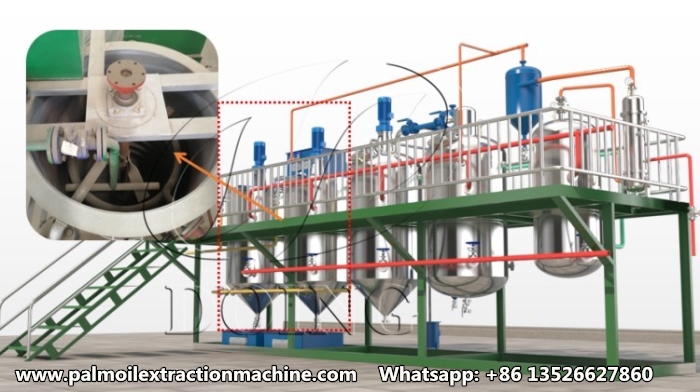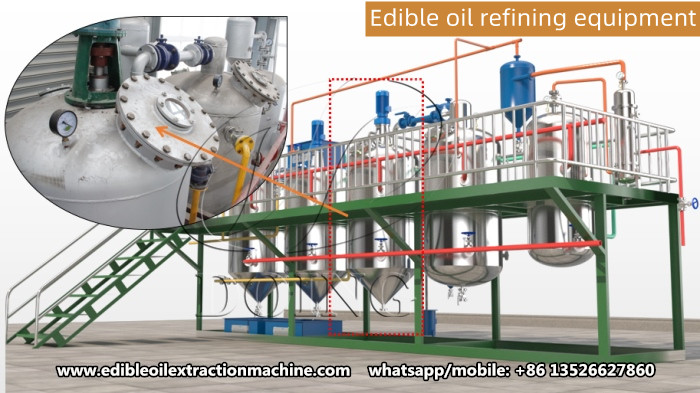 Home>Tech>Why is palm fruit oil deacidified during the refinery process? How to perform deacidification?
Home>Tech>Why is palm fruit oil deacidified during the refinery process? How to perform deacidification?
Why is palm fruit oil deacidified during the refinery process? How to perform deacidification?
Palm fruit oil, a staple in the global edible oils market, undergoes an intricate palm fruit oil refinery process to ensure its suitability for consumption and commercial use. One of the critical stages in palm fruit oil refinery process is palm fruit oil deacidification process, which plays a significant role in enhancing the palm fruit oil's quality, stability, and safety. But why exactly is palm fruit oil deacidified, and how is palm fruit oil deacidification process carried out? Next I will introduce it to you in detail.
 The photo of palm fruit oil
The photo of palm fruit oil
The importance of palm fruit oil deacidification process:
Palm fruit oil deacidification process is necessary because crude palm fruit oil naturally contains free fatty acids (FFAs), which are the byproducts of the palm fruit oil extraction process. These FFAs contribute to the palm fruit oil's acidity level, which can negatively affect its taste, odor, and shelf life. High acidity levels can make the palm fruit oil go rancid more quickly, leading to off-flavors and reduced nutritional value.
Moreover, high levels of FFAs can pose health risks if consumed excessively. Therefore, lowering the acidity through palm fruit oil deacidification process not only improves the palm fruit oil's qualities but also ensures it meets safety standards.
The palm fruit oil deacidification process:
The palm fruit oil deacidification process typically involves a chemical refinery method that utilizes an alkaline solution to neutralize the FFAs. Here's a stepwise breakdown of the palm fruit oil deacidification process:
1.Pretreatment:
Before palm fruit oil deacidification process, the crude palm fruit oil undergo pretreatment processes such as degumming to remove impurities like phospholipids.
 Palm fruit oil degumming and deacidification equipment
Palm fruit oil degumming and deacidification equipment
2.Alkaline Neutralization:
The actual palm fruit oil deacidification process involves adding an alkali, usually sodium hydroxide (caustic soda), to the palm fruit oil. This chemical reacts with the FFAs to form soapstock—a mixture of fatty acid salts that are insoluble in oil.
3.Separation:
The soapstock is then separated from the palm fruit oil through centrifugal forces or by settling and filtration. This leaves behind a refined palm fruit oil with significantly reduced FFA content.
4.Washing:
After separation, the palm fruit oil may be washed with water to remove any residual alkali and trace soapstock, ensuring the purity of the final product.
5.Bleaching and Deodorization:
Following palm fruit oil deacidification process, the palm fruit oil is often bleached using activated earth to remove any remaining color bodies. Subsequently, it undergoes deodorization to eliminate undesirable odors, leaving a bland and stable oil suitable for various uses.
 Palm fruit oil decolorization equipment
Palm fruit oil decolorization equipment
6.Quality Control:
Throughout the palm fruit oil extraction process, stringent quality control measures are implemented to ensure the oil meets specific standards for acidity, and other indicators of quality and safety.
In summary, palm fruit oil deacidification process is a crucial step in the palm fruit oil refinery process. It is performed to inhibit the growth of FFAs, which would otherwise compromise the palm fruit oil's quality and safety. As a professional edible oil processing equipment manufacturer, we can customize a suitable palm fruit oil refinery process for you based on your needs and investment costs. It should be noted that palm fruit oil refinery equipment is a unified whole, and it cannot be selected for a certain section. It is impossible to obtain palm fruit oil that meets national standards by only processing a certain section of the palm fruit oil refinery process. If you need palm fruit oil refinery equipment, you can contact us.

 Call us
Call us Chat online
Chat online
